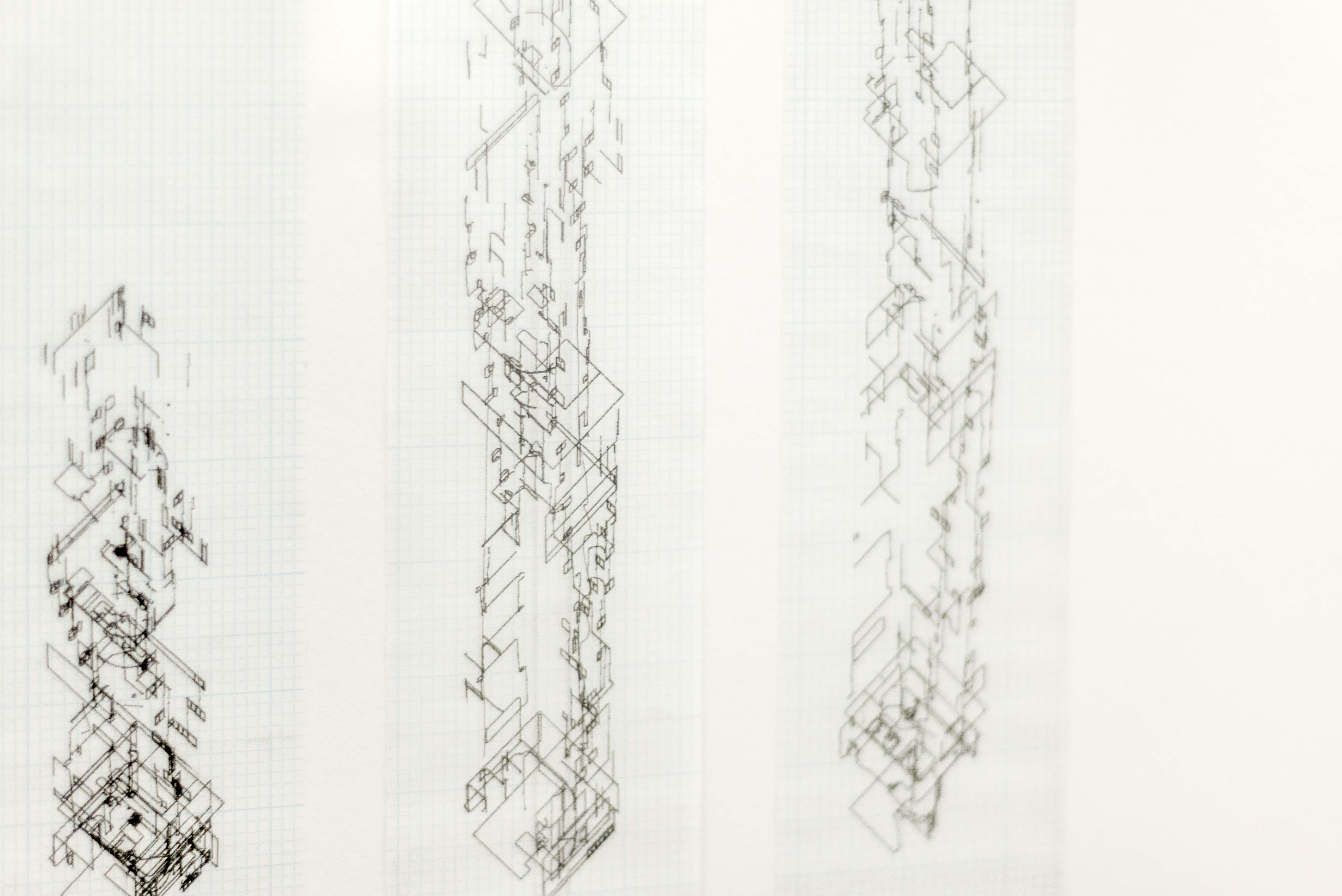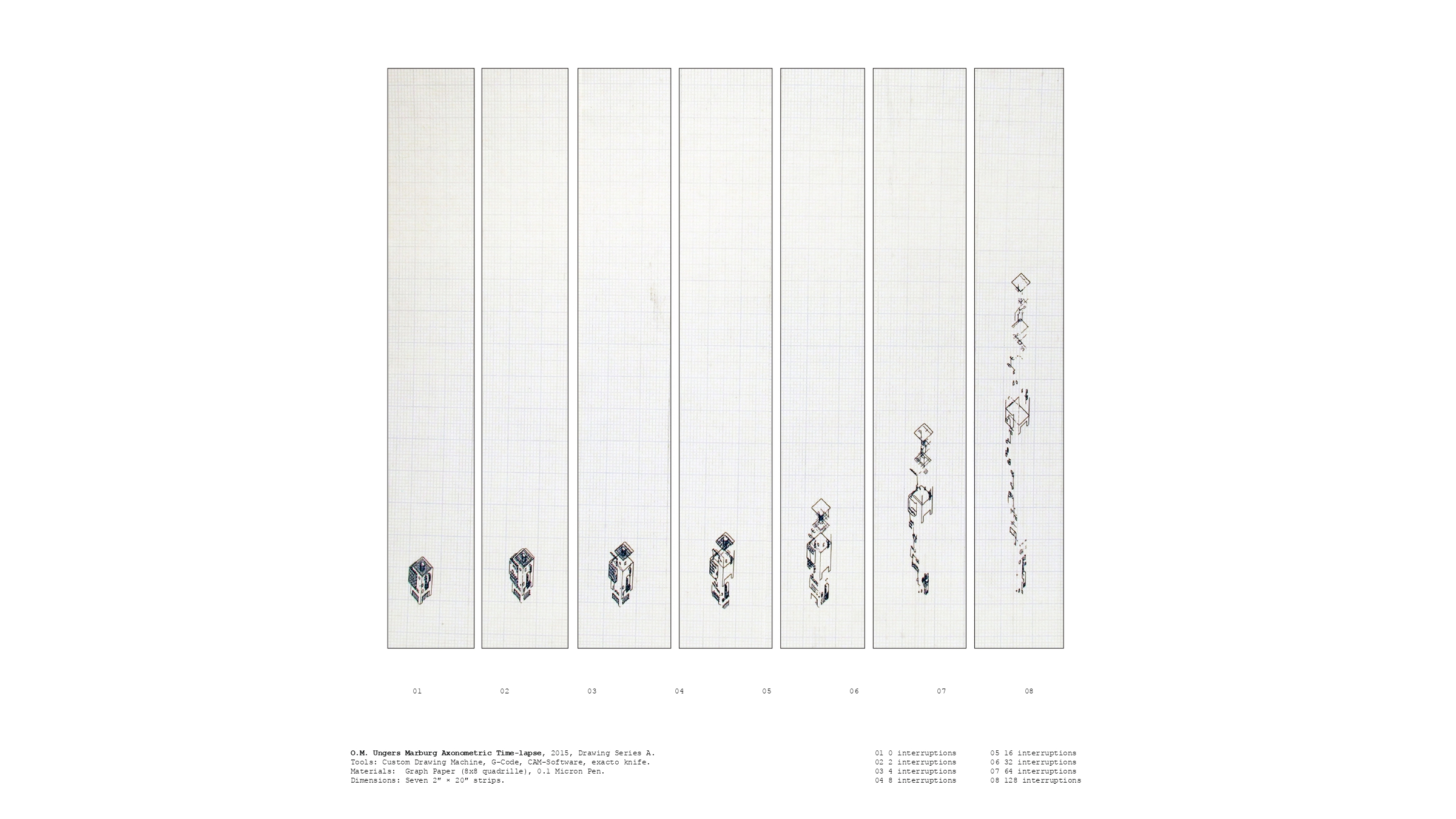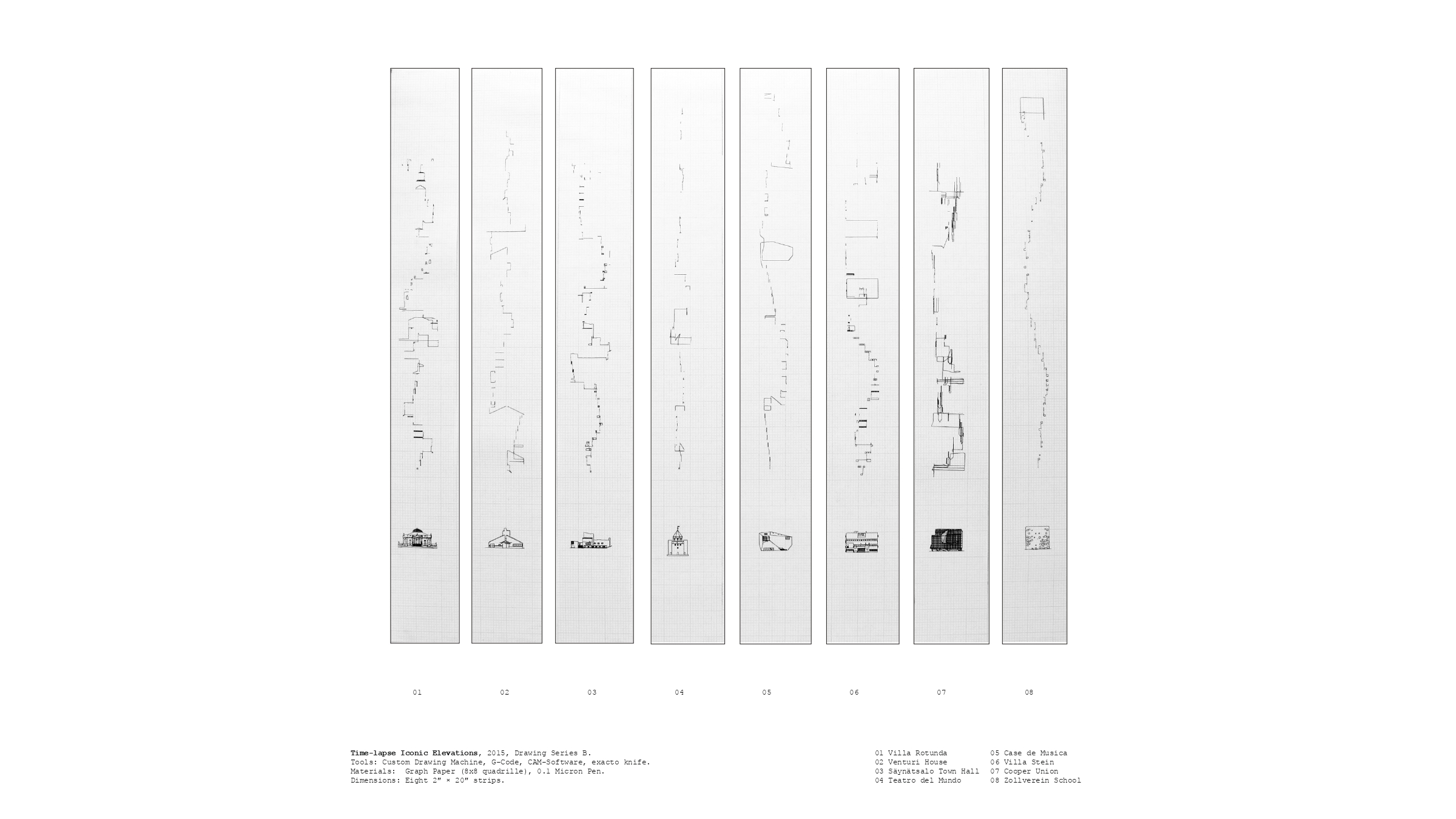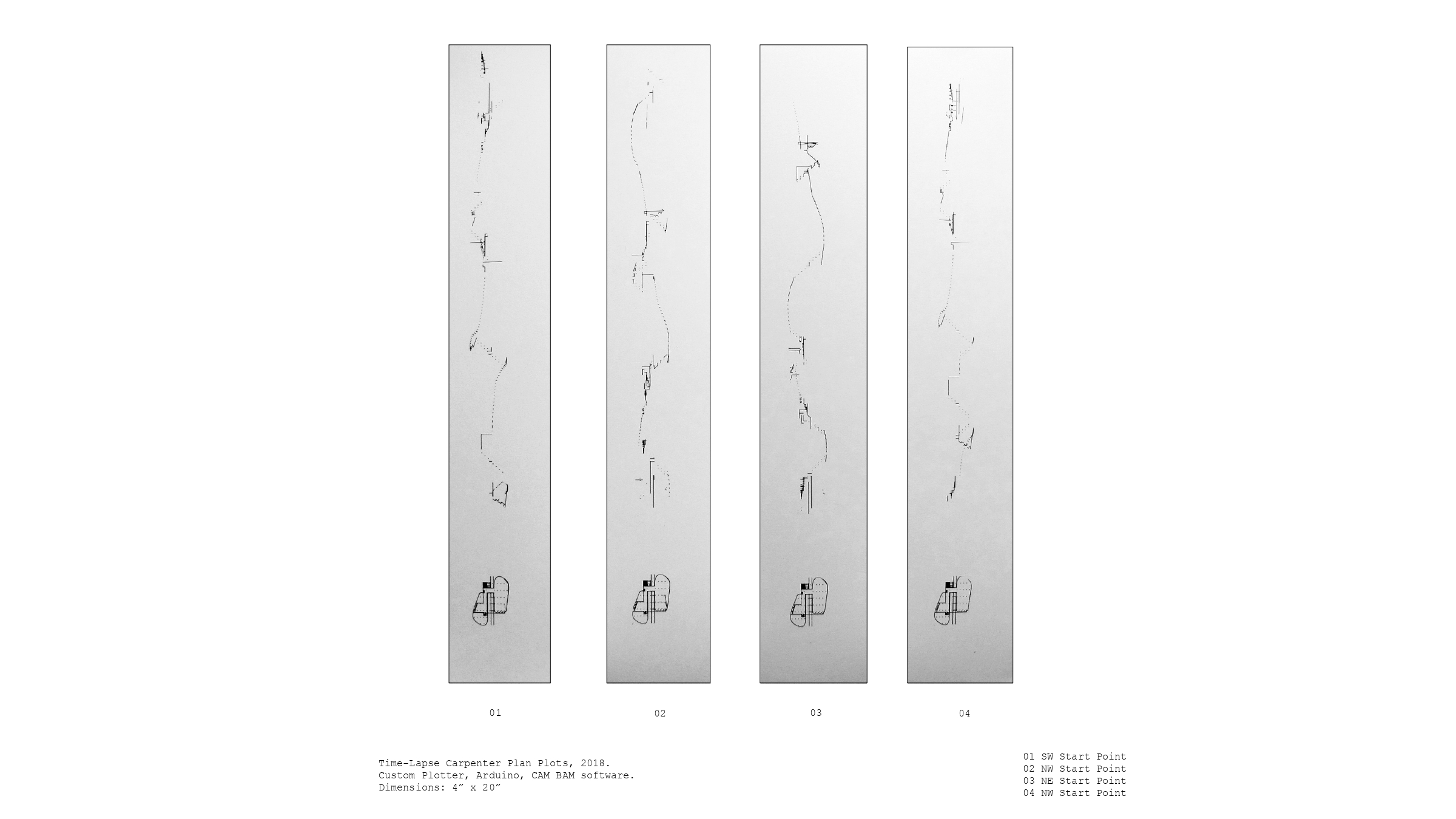Exploring the Mechanics of Representation
MIT Keller Gallery
 Photo credit: Sarah Wagner
Photo credit: Sarah Wagner
Architectural historian Robin Evans described the space between a drawing and its object as a once-productive site in architecture. This site, with the proliferation of new digital, printing, and fabrication technologies, has become a blind spot – an unexplored area often regarded as a given. This drawing project, a series of plotting experiments, explores the translation of virtual images into computer-plotted drawings. The ‘time-lapse’ drawings are created by pulling the paper away from a specially-designed plotter at regular intervals to interrupt a drawing process and mark the sequence of drawing over time.
The drawing series intervenes in these moments of translation to visualize the algorithms and programmed choices of Computer-Aided Manufacturing (CAM) and Computer Numerically Controlled (CNC) systems and their machine-machine interfaces. While a drawing or a 3D-model appears to us on screen as a collection of parts existing at one and the same time in virtual space, the constituent lines, triangles, and surfaces are actually represented in a software program as a sequence known as an index.
Specifically, the series compares different CNC/CAM drawing settings of the same image, such as the starting point, the sequence of drawing lines, orientation of the drawing; architectural drawings such as plans, sections, and elevations under the same default CNC/CAM settings; and different kinds of drawing interruptions, such as varying the frequency and duration of interruptions. Examining and visualizing a file’s index reveals the underlying infrastructure of the computer representations we interact with daily as designers.
https://sap.mit.edu/exhibit/keller-gallery/exploring-mechanics-representation
 Photo credit: Sarah Wagner
Photo credit: Sarah Wagner
 Photo credit: Sarah Wagner
Photo credit: Sarah Wagner
 Photo credit: Sarah Wagner
Photo credit: Sarah Wagner
 Photo credit: Sarah Wagner
Photo credit: Sarah Wagner




